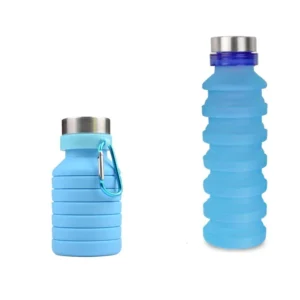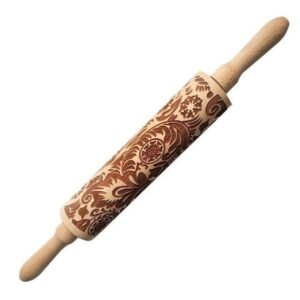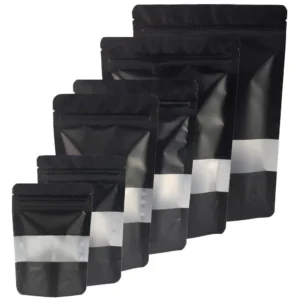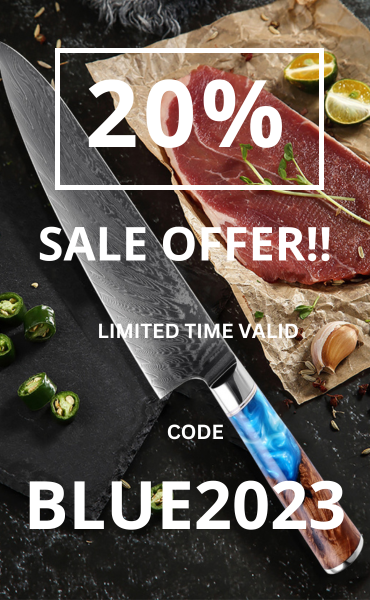- Introduction
- Understanding Sharpening Stones
- Top Sharpening Stones
- Step-by-Step Sharpening Guide
- Factors in Choosing a Sharpening Stone
- Reviews of Whetstone Brands and Kits
- Specialty Sharpening Systems Explored
- Expertise in Sharpening Stone Evaluation
- Recommendations for Various Needs
- Conclusion
- FAQs
- Frequently Linked Pages
Introduction
Keeping your knives sharp is essential for optimal performance in the kitchen. But with so many options out there, how do you choose the best knife sharpener stone?
Knife sharpener stones come in various materials, each serving a specific purpose. From coarse to fine grits, these stones provide the perfect surface for honing your blades to perfection. Unlike other methods like honing rods or electric sharpeners, using a knife sharpener stone allows you to have complete control over the process. You can follow specific directions and testing techniques to achieve razor-sharp results.
Understanding Sharpening Stones
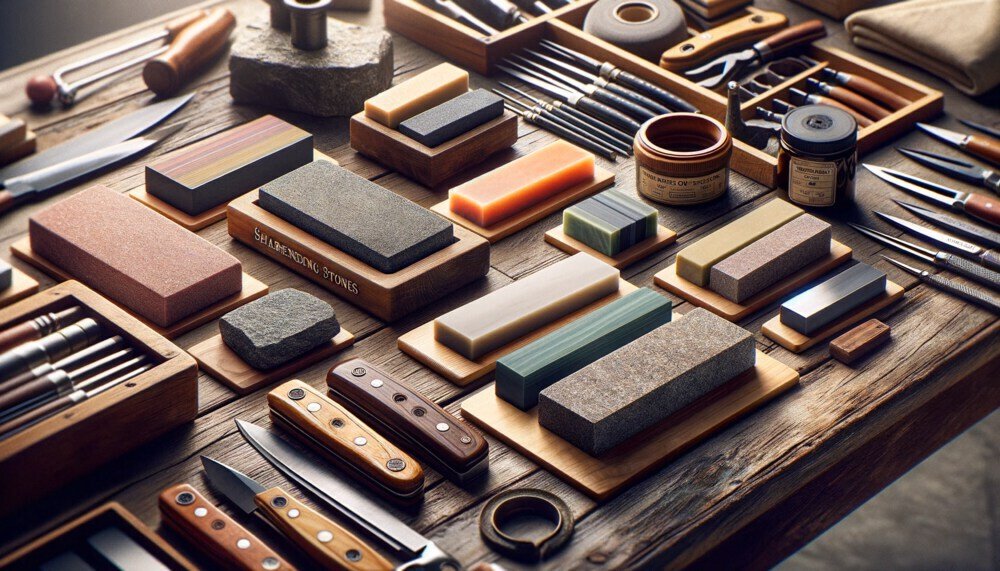
Different Grit Levels and Their Significance in Sharpening
Understanding the different grit levels of sharpening stones is crucial. Grit refers to the coarseness or fineness of the stone’s surface, which determines how much material is removed from the blade during sharpening. Lower grit levels, such as 200 or 400, are considered coarse and are ideal for repairing damaged or dull blades. On the other hand, higher grit levels like 1000 or 3000 are finer and perfect for refining and polishing the edge.
Using a variety of grit levels allows you to progress through different stages of sharpening. Starting with a coarse stone removes nicks and reshapes the blade, while moving on to finer stones hones and refines the edge for a razor-sharp finish. It’s important to note that using too fine a stone without first addressing any major damage may result in longer sharpening times or uneven edges.
Types of Sharpening Stones: Oil Stones, Water Stones, Diamond Stones
Sharpening stones come in various types, each with its own unique properties and advantages.
Oil stones are traditionally made from natural materials like novaculite or aluminum oxide bonded with oil. They provide excellent cutting ability but require oil as a lubricant during use.
Water stones, also known as Japanese water stones, are synthetic water-based alternatives that offer fast cutting action and produce superior sharpness. These stones require soaking in water before use to prevent them from drying out during sharpening.
Diamond stones feature a metal plate coated with diamond particles that provide exceptional durability and cutting speed. They excel at removing material quickly but can be more expensive compared to other types of sharpening stones.
The choice between these types depends on personal preference and specific needs. If you value convenience and ease of use, water stones may be your best bet. If you prioritize durability and efficiency, diamond stones might be the way to go.
How to Properly Care for and Maintain Sharpening Stones
To ensure the longevity and effectiveness of your sharpening stones, proper care and maintenance are essential. After each use, it’s important to clean the stone thoroughly with water or a cleaning solution specifically designed for sharpening stones. This removes any metal particles or debris that may have accumulated on the surface.
Flattening your sharpening stone periodically is necessary to maintain a consistent flat surface for optimal performance. Tools such as diamond plates or specialized flattening stones can be used for this purpose.
Storing your sharpening stone in a dry place away from moisture is crucial to prevent warping or cracking.
Top Sharpening Stones
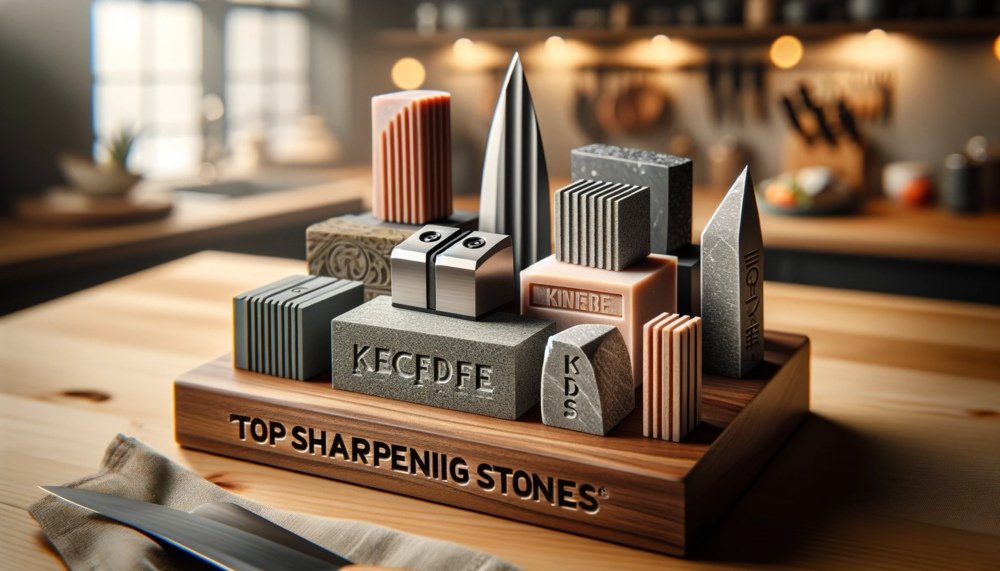
Having a high-quality knife sharpener stone is essential. We’ll explore their features, durability, effectiveness, and price points to help you make an informed decision.
In-depth reviews and rankings of the best knife sharpener stones on the market
We have thoroughly researched and tested various sharpening stones to compile a list of the best options out there. Our in-depth reviews provide detailed insights into each product’s performance, including how effectively they sharpen knives and how long they last. We also take into account user feedback and experiences to ensure our rankings are accurate.
One standout option is diamond stones. These stones consist of diamond plates that offer exceptional durability and sharpening capabilities. They are known for providing a great edge on knives due to their hard surface. Diamond stones are particularly effective at removing material quickly, making them ideal for reprofiling or repairing damaged blades.
Factors considered in selecting the top sharpening stones
In selecting the top sharpening stones, we consider several factors that contribute to their overall quality. Price is one important aspect as it determines the affordability of a particular stone without compromising its performance. We compare prices across different brands to find options that offer good value for money.
Durability is another crucial factor we assess when evaluating sharpening stones. A durable stone ensures longevity and can withstand frequent use without wearing out quickly. It’s important to invest in a stone that will last for years rather than needing constant replacement.
Effectiveness is paramount. We examine how well each stone sharpens knives and retains their edge over time. The ability to achieve a razor-sharp edge consistently is what sets apart the best sharpening stones from mediocre ones.
Comparison of prices, durability, and effectiveness among different brands
To help you make an informed decision, we compare the prices, durability, and effectiveness of sharpening stones from various brands. We highlight the strengths and weaknesses of each option to provide a comprehensive overview.
Some brands may offer more affordable options without compromising on quality. Others might focus on producing highly durable stones that can withstand heavy use. By comparing these factors side by side, you can identify which brand aligns with your specific needs and preferences.
Step-by-Step Sharpening Guide
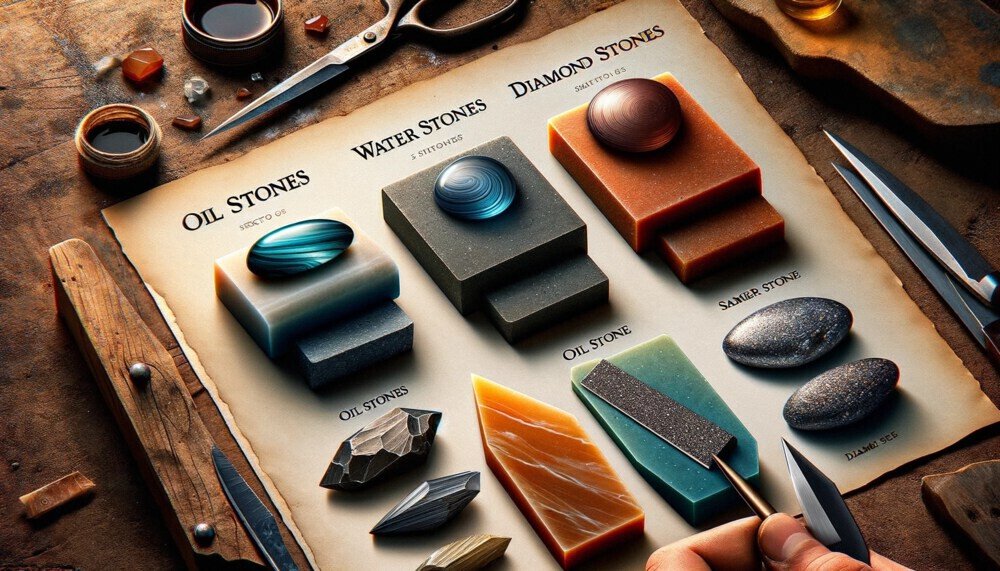
Detailed Instructions for Effective Use of a Knife Sharpener Stone
To achieve the best results when sharpening your knives, it’s essential to follow a step-by-step process using a knife sharpener stone. Here’s a detailed guide on how to effectively use a knife sharpener stone and bring back that razor-sharp edge to your blades.
1. Prepare the Stone: Before you begin, make sure your knife sharpener stone is clean and free from any debris or residue. You can rinse it with water and scrub gently if needed. Place the stone on a stable surface, ensuring it won’t slip during the sharpening process.
2. Choose the Right Angle: The key to achieving a sharp edge lies in maintaining the correct angle while sharpening. Most knives require an angle between 15-20 degrees for optimal results. If you’re unsure about the angle, consider using an angle guide or consult the manufacturer’s recommendations.
3. Start with Coarse Grit: Begin by using the coarse side of your knife sharpener stone. This grit level helps remove any nicks or dullness from the blade quickly. Hold the knife at the desired angle and apply light pressure as you glide it across the stone in smooth strokes, moving from base to tip.
4. Focus on Consistency: To maintain consistency throughout the sharpening process, ensure that each stroke covers an equal length of blade surface area. This helps prevent uneven edges and guarantees an even distribution of sharpening across the entire blade.
5. Alternate Sides Regularly: Remember to alternate sides after every few strokes to ensure even wear on both sides of the blade. This prevents one side from becoming sharper than the other and maintains balance during cutting tasks.
6. Transition to Finer Grits: Once you’ve achieved a satisfactory edge using coarse grit, switch to finer grits to refine and polish the blade further. Finer grits help create a finer edge and enhance the sharpness of your knives.
7. Hone for the Perfect Finish: After sharpening, it’s important to hone the blade to remove any burrs or imperfections. A honing rod or a leather strop can be used for this purpose. Gently run the knife along the honing rod or strop at the same angle used during sharpening, ensuring an even and smooth finish.
By following these step-by-step instructions, you’ll be able to effectively use a knife sharpener stone and restore your blades to their former glory. Remember, practice makes perfect, so don’t get discouraged if you don’t achieve razor-sharp results right away.
Factors in Choosing a Sharpening Stone
There are a few key factors that you should consider. These factors will greatly impact the sharpening process and the results you can achieve. Let’s dive into these considerations to help you choose the right sharpening stone for your needs.

Grit Size
One of the most important factors to consider when choosing a sharpening stone is the grit size. Grit size refers to the coarseness or fineness of the abrasive particles on the surface of the stone. Stones with lower grit numbers, such as 200 or 400, have larger abrasive particles and are considered coarse. On the other hand, stones with higher grit numbers, like 1000 or 3000, have smaller abrasive particles and are finer.
The grit size you choose depends on what type of blade you’re sharpening and how dull it is. Coarse stones are ideal for repairing damaged or very dull blades, while finer stones are better suited for regular maintenance and refining an already sharp edge.
Material
Another factor to consider is the material of the sharpening stone. Different materials offer varying levels of hardness and durability, which can affect their performance and lifespan.
One popular option is synthetic water stones, which provide excellent cutting ability and require soaking in water before use. They come in various grit sizes and offer a good balance between cost and performance.
Natural stones like Arkansas or Japanese whetstones are highly regarded for their exceptional quality but tend to be more expensive. They often require oil instead of water for lubrication during sharpening.
Ceramic stones are known for their durability and ability to maintain their flatness over time. They typically don’t require any pre-soaking but may need occasional cleaning with a diamond flattening plate.
Size/Shape
The size and shape of the sharpening stone also play a role in its usability and versatility. Smaller stones are more portable and convenient for on-the-go sharpening, while larger stones provide a larger surface area for sharpening longer blades.
The shape of the stone can also affect its functionality. Flat stones are versatile and suitable for most types of blades, while some specialty stones have unique shapes designed specifically for certain blade styles or purposes.
It’s essential to choose a stone size and shape that aligns with your specific needs and preferences. Consider factors like the types of knives you own, the level of portability you desire, and the space available in your sharpening setup.
Reviews of Whetstone Brands and Kits
We have evaluated these products based on user feedback and expert opinions to provide you with comprehensive reviews. Whether you are a beginner or an experienced sharpener, we have recommendations for different skill levels and specific requirements.
Comprehensive Evaluations
We have carefully examined various whetstone brands and kits to bring you an extensive evaluation. Our goal is to give you a clear understanding of each product’s features, performance, and overall value for money. By considering factors like grit size, material quality, durability, and ease of use, we aim to help you make an informed decision.
Pros and Cons Analysis
To provide a balanced perspective, we have analyzed the pros and cons of each whetstone brand or kit. This analysis is based on real user experiences as well as insights from experts in the field. By highlighting both the strengths and weaknesses of each product, we aim to give you a comprehensive overview that can guide your purchasing decision.
Recommendations for Different Skill Levels
We understand that not all sharpeners have the same level of experience or expertise. That’s why our reviews include recommendations tailored to different skill levels. Whether you’re just starting out or already a seasoned pro, we’ve got you covered. From beginner-friendly options with user-friendly instructions to advanced kits designed for professionals, there’s something for everyone.
Recommendations for Specific Requirements
In addition to skill levels, we also consider specific requirements when making our recommendations. Some sharpeners may be looking for a whetstone that excels at sharpening kitchen knives, while others may need one specifically for hunting or outdoor tools. We take these factors into account when evaluating each brand or kit so that you can find the perfect match for your needs.
With our comprehensive evaluations, pros and cons analysis, and tailored recommendations, you can confidently choose the best whetstone brand or kit for your sharpening needs. Whether you’re a beginner looking to improve your knife skills or an experienced sharpener seeking the highest level of precision, our reviews will help you make an informed decision.
Specialty Sharpening Systems Explored
Traditional knife sharpener stones might not be the only option. There are specialized systems available that can make the process easier and more precise. These systems include guided angle systems and electric sharpeners.

Advantages and Disadvantages Compared to Traditional Knife Sharpener Stones
Guided angle systems offer a foolproof way to maintain a consistent angle while sharpening your blades. They typically feature an adjustable guide that helps you achieve the desired angle every time. This is especially useful for beginners who may struggle with maintaining the correct angle on their own. Guided angle systems often come with different grit options, allowing you to gradually refine the cutting edge of your knife.
On the other hand, electric sharpeners provide convenience and speed. With these systems, all you need to do is place your knife in the designated slot and let the machine do its job. Electric sharpeners are known for their efficiency and ability to produce razor-sharp edges quickly. However, they may remove more material from your blade compared to traditional stones or guided angle systems.
While specialized systems offer advantages in terms of ease of use and efficiency, they also have some drawbacks. One disadvantage is that they can be more expensive than traditional knife sharpener stones. Some people argue that using these systems can lead to a loss of skill in manually sharpening knives with stones.
Expert Insights into Choosing the Right System
Choosing between traditional knife sharpener stones and specialized systems ultimately depends on your needs and preferences as a home cook or professional chef. If you value precision and consistency above all else, a guided angle system may be the best choice for you. It will help you maintain a consistent angle while providing different grit options for optimal results.
On the other hand, if speed and convenience are paramount in your kitchen routine, an electric sharpener might be the way to go. Just keep in mind that you may need to sacrifice a bit of control and remove more material from your blades.
Ultimately, it’s essential to consider factors such as your skill level, budget, and the types of knives you own before investing in a specialized sharpening system. Consulting with experts or reading reviews from reputable sources like The Spruce Eats can provide valuable insights into which system suits your particular needs.
Expertise in Sharpening Stone Evaluation
Criteria for Evaluating Sharpening Stones
Experts in the field of knife sharpening rely on specific criteria to evaluate the quality and performance of sharpening stones. One crucial aspect they consider is the grit level of the stone. Grit refers to the coarseness or fineness of the abrasive particles embedded in the stone’s surface. Different grit levels are suitable for various purposes, such as repairing damaged blades or refining edges to a razor-sharp finish. Experts assess how well a sharpening stone holds up under pressure and whether it effectively removes material from the blade.
Insights into Industry Standards
When evaluating sharpening stones, experts also take into account industry standards that define durability, efficiency, and overall performance. For instance, water stones are highly regarded for their ability to remove metal quickly while providing excellent feedback during use. Natural stones, on the other hand, are known for their unique characteristics and ability to deliver exceptionally sharp edges. Experts consider factors such as consistency in particle size distribution and hardness when assessing a stone’s effectiveness.
The Importance of Reliable Reviews and Expert Opinions
Choosing the best knife sharpener stone can be overwhelming with countless options available on the market. That’s why it’s essential to rely on reliable reviews and expert opinions when making your decision. Trusted sources provide valuable insights into different sharpening stones’ pros and cons based on real-world testing and experience. By consulting these reviews, you can gain a better understanding of which stones offer superior performance in terms of speed, precision, versatility, and ease of use.
It’s worth noting that individual preferences may vary depending on personal needs and skill levels. However, expert opinions can help guide you towards finding a sharpening stone that aligns with your requirements.
When looking for reliable reviews online, be sure to consider multiple sources rather than relying solely on one review or opinion. This approach allows you to gather a range of perspectives and make a more informed decision. Consider seeking recommendations from experienced knife enthusiasts or professionals who have hands-on experience with different types of sharpening stones.
Recommendations for Various Needs
Kitchen Knives: Slice and Dice with Precision
If you’re a home cook or aspiring chef, having sharp kitchen knives is essential for effortless slicing and dicing.There are a few factors to consider. First, look for a stone with a fine grit level, such as 3000-8000, to achieve that razor-sharp edge. Choose a stone that is easy to use and maintain.
One popular option for kitchen knives is the Whetstone Cutlery Two-Sided Knife Sharpening Stone. This versatile stone features two different grit levels (1000 and 6000), allowing you to start with the coarser side and finish with the finer side for an ultra-sharp edge. Its non-slip bamboo base ensures stability during use.
Another excellent choice is the Sharp Pebble Premium Whetstone Knife Sharpening Stone. With its dual-sided design (1000/6000 grit), this stone provides the perfect balance between sharpening and polishing your blades. It also includes a rubber base to prevent slipping and an angle guide for precise sharpening.
Hunting Knives: Stay Sharp in the Great Outdoors
Durability and portability are key considerations. You need a sharpening stone that can withstand rugged outdoor conditions while effectively restoring your blade’s sharpness on-the-go.
For hunters, we recommend the Lansky Dual Grit Combo Stone. This compact stone features two different grits (120/280) on opposite sides, allowing you to tackle both coarse reshaping and fine honing of your hunting knife’s edge. Its lightweight design makes it easy to carry in your backpack or pocket.
Another top contender is the DMT Dia-Sharp Bench Stone. While it may be slightly larger than other options, its diamond-coated surface offers exceptional durability and cutting power. With two different grit options available (coarse and fine), this stone is ideal for maintaining the sharpness of your hunting knife in any outdoor situation.
Striking the Right Balance: Cost vs. Quality
When selecting a sharpening stone, it’s important to find the right balance between cost and quality. While there are affordable options on the market, investing in a higher-quality stone can yield better results and ensure longevity.
One such high-quality option is the King Japanese Sharpening Stone. This waterstone comes in various grit levels (1000-8000) and is known for its excellent sharpening capabilities.
Conclusion
We explored the different types of sharpening stones, reviewed the top brands and kits, and provided a step-by-step sharpening guide. We also discussed the factors to consider when selecting a sharpening stone and delved into specialty sharpening systems.
By following our recommendations and using the techniques outlined in this article, you can ensure that your knives are always sharp and ready for any culinary challenge. Remember, a sharp knife is not only safer but also enhances your cooking experience. So why settle for dull blades when you can easily maintain razor-sharp edges?
Take action today and invest in a high-quality sharpening stone that suits your needs. Your future self will thank you every time you effortlessly slice through tomatoes or effortlessly carve a roast. Don’t wait any longer – get your hands on the best knife sharpening stone and elevate your culinary skills to new heights!
FAQs
What is the best knife sharpener stone for beginners?
The best knife sharpener stone for beginners is one that is easy to use and provides consistent results. Look for a stone with a lower grit level (around 1000-3000) as it will be more forgiving and easier to control while sharpening.
How often should I use a knife sharpener stone?
It depends on how frequently you use your knives, but generally, using a knife sharpener stone once every few months should suffice for regular home use. However, if you notice that your knives are becoming dull more quickly or not cutting properly, it may be time to sharpen them again.
Can I use a knife sharpener stone on serrated knives?
No, knife sharpener stones are not suitable for sharpening serrated knives. Serrated knives require specialized tools or professional sharpening services because of their unique edge design. It’s best to consult an expert or refer to the manufacturer’s recommendations for sharpening serrated blades.
How do I clean and maintain my knife sharpener stone?
To clean your knife sharpener stone, rinse it under warm water after each use to remove any metal particles or debris. Use a soft brush or sponge with mild detergent if necessary. Allow the stone to air dry completely before storing it in a cool and dry place.
Can I use oil on my knife sharpener stone?
Some knife sharpener stones require lubrication with oil, while others can be used with water alone. Check the manufacturer’s instructions or product specifications to determine whether your specific stone requires oil or water during sharpening. Using the wrong lubricant can affect the performance of the stone.
Frequently Linked Pages
1. Best knife sharpener – Best Knife Sharpener: Enhance Precision And Efficiency In Your Kitchen


